
JOURNAL OF THE CHEMICAL SOCIETY OF PAKISTAN
Scope & Guideline
Pioneering Research for Tomorrow’s Chemical Challenges.
Introduction
Aims and Scopes
- Chemical Synthesis and Characterization:
Research related to the synthesis of novel chemical compounds, including organic, inorganic, and coordination complexes, with a focus on their structural and functional characterization. - Analytical Chemistry:
Development and optimization of analytical techniques for the detection and quantitation of various substances, including environmental pollutants, pharmaceuticals, and natural products. - Materials Science:
Exploration of new materials, particularly nanomaterials and composites, with applications in catalysis, energy storage, and environmental remediation. - Biochemistry and Pharmacology:
Studies investigating the biological activities of chemical compounds, including their potential therapeutic effects, toxicity, and mechanisms of action. - Environmental Chemistry:
Research addressing chemical processes in the environment, including pollution, degradation pathways, and the development of sustainable practices. - Theoretical and Computational Chemistry:
Utilization of computational methods to study chemical systems, predict properties, and model interactions at the molecular level. - Green Chemistry:
Focus on sustainable practices in chemical processes, including the development of eco-friendly synthesis methods and materials.
Trending and Emerging
- Nanotechnology and Nanomaterials:
There is a significant increase in research related to the synthesis and application of nanomaterials, particularly in catalysis, drug delivery, and environmental remediation. - Sustainable and Green Chemistry Practices:
An increasing number of studies are focused on green chemistry principles, including the development of eco-friendly synthesis methods and the use of renewable resources. - Biological Applications of Chemistry:
Research exploring the intersection of chemistry and biology is on the rise, particularly studies on drug development, biocatalysis, and the therapeutic potential of natural products. - Computational Chemistry and Modeling:
There is a growing trend towards the use of computational methods to predict chemical behavior and interactions, which is becoming an essential tool in modern chemical research. - Interdisciplinary Research:
Emerging themes reflect a trend towards interdisciplinary approaches that combine chemistry with fields such as materials science, biology, and environmental science, addressing complex problems through collaborative efforts.
Declining or Waning
- Traditional Organic Synthesis Methods:
There has been a noticeable decrease in publications focusing on classical organic synthesis techniques, likely due to the rise of more sustainable and efficient methods. - Conventional Analytical Techniques:
The reliance on traditional analytical methods appears to be waning as researchers increasingly adopt advanced techniques such as chromatographic and spectrometric approaches that offer greater sensitivity and specificity. - Studies on Inorganic Compounds:
Research specifically focused on inorganic compounds, particularly those with limited applications, has declined in favor of studies on hybrid or composite materials that demonstrate broader utility. - Single-Focus Environmental Studies:
The focus on isolated environmental studies without interdisciplinary approaches is decreasing, as there is a growing trend towards integrated research that combines chemistry with environmental science.
Similar Journals
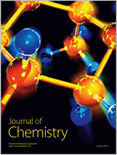
Journal of Chemistry
Empowering Researchers Through Open Access ChemistryJournal of Chemistry, published by Hindawi Ltd, serves as a critical platform for advancing knowledge in the field of chemistry, particularly in its miscellaneous sub-disciplines. With an impressive 2023 Scopus Rank of #123 out of 408 and positioned in the Q2 quartile, this journal exemplifies a robust academic rigor that appeals to researchers, professionals, and students alike. It features articles related to innovative chemical research and developments, catering to a diverse audience eager to contribute to the growing body of literature in the chemical sciences. The journal has been operational from 2013 to 2024, and its Open Access model ensures that findings are easily accessible to a global audience, fostering collaboration and knowledge sharing. With a commitment to quality and relevance, the Journal of Chemistry continues to play a significant role in shaping contemporary chemical research and education.

Jordan Journal of Chemistry
Advancing Chemistry: Bridging Local Insights with Global Impact.The Jordan Journal of Chemistry is a prominent publication dedicated to advancing the field of chemistry in Jordan and beyond. Published by the Yarmouk University Deanship of Research & Graduate Studies, this journal serves as a platform for researchers, educators, and practitioners to disseminate their findings in a variety of chemistry sub-disciplines. Although currently classified in Q4 of miscellaneous chemistry and ranking within the 9th percentile according to Scopus, the journal plays a crucial role in fostering academic dialogue and collaboration in the region. With its ISSN 1814-9111 and E-ISSN 2079-7249, the Jordan Journal of Chemistry offers open access to researchers from diverse backgrounds, ensuring that critical research is both accessible and impactful. By bridging local studies with global scientific advancements, this journal is poised to contribute significantly to the growth and recognition of chemistry as a key scientific discipline in the region, with convergence efforts set from 2020 to 2024.
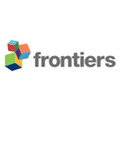
Frontiers in Chemistry
Advancing the Boundaries of Chemical Knowledge.Frontiers in Chemistry is an esteemed and innovative Open Access journal published by FRONTIERS MEDIA SA, based in Lausanne, Switzerland. Since its inception in 2013, the journal has established itself as a leading platform for the dissemination of high-quality research across a broad spectrum of chemistry disciplines, achieving a notable Q1 classification in the miscellaneous chemistry category as of 2023. With an impressive Scopus rank, placing it at 72nd out of 408 in General Chemistry and falling within the 82nd percentile, Frontiers in Chemistry is committed to publishing significant findings that contribute to the advancement of the field. The journal's Open Access model ensures that research is freely accessible to all, fostering a greater exchange of knowledge and collaboration among researchers, professionals, and students globally. It covers a range of topics, from organic and inorganic chemistry to materials science and biochemistry, making it an essential resource for anyone seeking to stay at the forefront of chemical research.
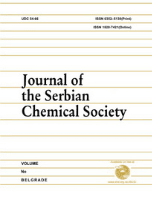
JOURNAL OF THE SERBIAN CHEMICAL SOCIETY
Fostering Innovation in Chemical Research Since 1930JOURNAL OF THE SERBIAN CHEMICAL SOCIETY, an esteemed publication in the field of chemistry, is published by the SERBIAN CHEMICAL SOCIETY and has been an essential platform for the dissemination of research since 1930. With an ISSN of 0352-5139, this Open Access journal is dedicated to fostering communication and collaboration among chemists worldwide, making its contents readily accessible to researchers, professionals, and students alike. Based in Serbia, the journal features a wide range of topics within the domain of general chemistry, as reflected in its Scopus rankings, which place it in the 34th percentile among its peers. The journal's engagement with the global scholarly community is further underscored by its consistent publication history since 1985, with coverage extending through to 2024. As the journal continues to evolve, it remains committed to promoting high-quality research and advancing the field of chemistry.
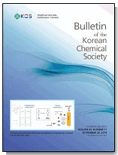
BULLETIN OF THE KOREAN CHEMICAL SOCIETY
Showcasing impactful studies in the world of chemistry.BULLETIN OF THE KOREAN CHEMICAL SOCIETY, published by WILEY-V C H VERLAG GMBH, is a prominent journal in the field of chemistry, with a specific emphasis on miscellaneous chemical research. With an ISSN of 0253-2964 and E-ISSN 1229-5949, this journal serves as a pivotal platform for researchers, professionals, and students who are eager to showcase innovative studies that address both foundational and emerging topics in the discipline. Boasting a commendable Q2 ranking in the 2023 chemistry quartiles, the journal ranks within the top 50th percentile in Scopus, reflecting its commitment to high-quality scientific discourse. The content published within its pages from 1996 to 2024 covers a vast array of subjects, ensuring a multidisciplinary approach to chemical research. The journal’s impact in the academic community is underscored by its accessibility to a global audience, making it an essential resource for those wishing to stay at the forefront of chemical advancements.
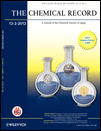
CHEMICAL RECORD
Fostering Global Collaboration in Chemical SciencesThe Chemical Record is a prestigious peer-reviewed journal published by WILEY-V C H VERLAG GMBH, focusing on innovative research and developments across the diverse and evolving fields of chemistry and biochemistry. With an esteemed 2023 Impact Factor and recognized as a Q1 journal in several categories—including Biochemistry, Chemical Engineering, and Materials Chemistry—The Chemical Record stands as a critical resource for researchers, professionals, and students aiming to disseminate and acquire knowledge in these disciplines. The journal's engaging scope covers contemporary topics and fosters collaboration within the global scientific community, ensuring accessibility to cutting-edge research. By publishing articles that meet the highest standards of scholarship, it has earned a significant place within the academic ecosystem, as reflected in its strong Scopus rankings. Although The Chemical Record operates without open access, it remains deeply committed to advancing the field of chemistry through rigorous and impactful publications that bridge gaps between theory and practice.

Journal of the Korean Chemical Society-Daehan Hwahak Hoe Jee
Pioneering Discoveries in Chemistry and BeyondJournal of the Korean Chemical Society-Daehan Hwahak Hoe Jee, published by the esteemed Korean Chemical Society, serves as a vital platform for scientific communication in the expansive fields of chemistry and chemical engineering. Established in 2005, this journal showcases original research, reviews, and scholarly articles that contribute to the advancement of chemical sciences, promoting collaboration among researchers globally. Although it currently holds a Q4 category ranking in both Chemistry and Chemical Engineering on the Scopus platform, the journal remains committed to improving its standards and attracting high-quality submissions that reflect the latest innovations and discoveries. With an ISSN of 1017-2548 and an E-ISSN of 2234-8530, this journal provides invaluable resources for professionals, academia, and students dedicated to exploring novel ideas and fostering ongoing education in chemistry. Its location in Seoul, South Korea, places it at the heart of a vibrant scientific community, encouraging engagement and contributions that enhance the journal's profile within the international scientific discourse.

JOURNAL OF THE CHILEAN CHEMICAL SOCIETY
Catalyzing Knowledge for a Sustainable Future.The Journal of the Chilean Chemical Society, published by the Sociedad Chilena de Química, serves as a premier platform for disseminating significant research findings in the field of Chemistry. With an ISSN of 0717-9707, this journal has established its presence since 2003, providing open access to a diverse range of studies and advancements in this vital scientific domain. It currently holds a Q3 category ranking in Chemistry (miscellaneous) and ranks 196 out of 408 in the general chemistry category on Scopus, indicating its valuable contributions to the field. Through the journal, researchers, professionals, and students are encouraged to engage with cutting-edge research and foster collaboration among the scientific community in Chile and beyond. The society's commitment to excellence ensures that articles published reflect high-quality research, underpinning the journal’s role in shaping knowledge and innovation in chemistry.
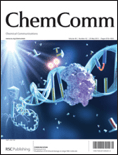
CHEMICAL COMMUNICATIONS
Advancing the frontiers of chemical knowledge.Chemical Communications, published by the esteemed Royal Society of Chemistry, is a prominent journal within the field of chemical science, focusing on the dissemination of cutting-edge research in a variety of sub-disciplines including catalysis, materials chemistry, and electronic materials. Operating without an open access model, this journal provides critical insights from contributors around the globe, enhancing our understanding of complex chemical interactions and innovative applications. Ranked in the top quartile for several categories such as Ceramics and Composites, and Metals and Alloys, Chemical Communications boasts impressive Scopus rankings, securing strong positions across multiple fields and showcasing its influence within the scientific community. The journal is committed to advancing knowledge and fostering collaboration among researchers, professionals, and students, making it an invaluable resource for those looking to stay abreast of the latest advancements in chemistry and materials science. With a publication history dating back to 1965 and continuing into 2024, its rich archive serves as a vital repository of chemical research and development.

CHEMICAL JOURNAL OF CHINESE UNIVERSITIES-CHINESE
Fostering Innovation in Chemistry Education.CHEMICAL JOURNAL OF CHINESE UNIVERSITIES-CHINESE, published by Higher Education Press, serves as a vital platform for advancing research in the field of chemistry. With a history dating back to 1996, this journal has evolved to encompass a wide range of topics fundamental to the chemistry community, catering to both applied and theoretical perspectives. Although classified in Quartile 4 within the broader chemistry category, it remains a significant contributor to the knowledge base, ranking 281st out of 408 journals in the general chemistry category according to Scopus. Positioned in Beijing, China, the journal aims to foster collaboration among researchers and professionals while disseminating innovative research and developments. By promoting open exchange of ideas in chemistry, it strives to elevate the scholarly dialogue and contribute to ongoing education for students and professionals alike, with its content accessible through institutional subscriptions.